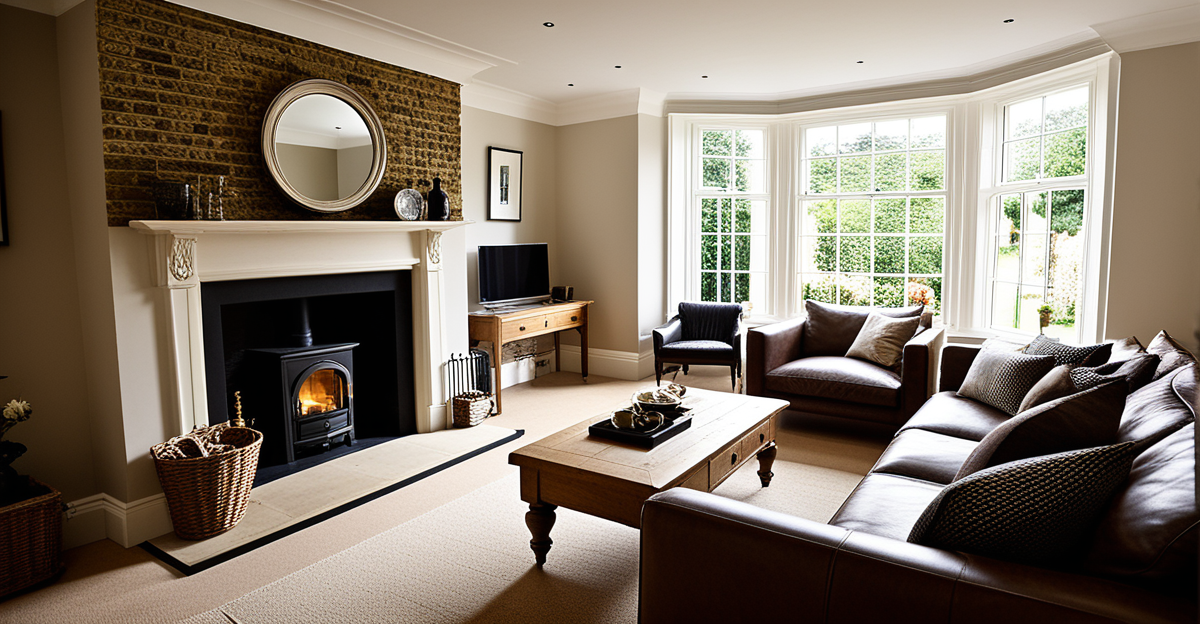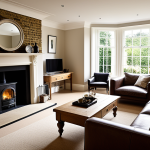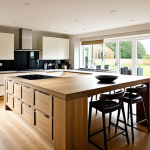Core Architectural Styles in Traditional UK Home Design
Delving into traditional UK architecture reveals distinct styles shaped by history. The Georgian style, prevalent from the early 18th to early 19th centuries, showcases symmetry, sash windows, and restrained decorative elements. Rows of terraced houses with balanced façades are its hallmark, representing order and proportion.
Following this, Victorian homes emerged with more ornate details, bay windows, and varied rooflines. They often feature patterned brickwork and decorative bargeboards, reflecting the industrial era’s eclectic tastes. These homes introduced complexity and charm, setting them apart from Georgian simplicity.
Also read : How can you balance aesthetics and functionality in UK home interiors?
The Tudor style goes further back, noted for timber framing, steeply pitched roofs, and leaded windows. This style evokes medieval England, with hallmark exposed beams and masonry giving a rustic yet stately feel.
These three styles deeply influence how British historic houses are perceived. Modern “traditional” designs often blend aspects such as sash windows from the Georgian period, Victorian decorative trims, or Tudor timber accents, preserving the cultural narrative embedded in UK architecture. Such elements continue to resonate as symbols of heritage and craftsmanship.
In the same genre : What are the top tips for creating a pet-friendly UK home?
Common Exterior Materials and Distinctive Features
Traditional UK architecture prominently features brick homes, stone cottages, and timber-framed buildings. Brick, especially red or buff, dominates Georgian and Victorian homes, lending durability and uniformity to terraced streetscapes. Stone is often used in rural cottages or historic manor houses, valued for its natural texture and weather resistance. Timber frames, classically associated with Tudor style, offer exposed beams that create striking visual patterns, blending function with rustic charm.
Roof shapes vary by period: Georgian roofs tend to be simple and pitched, often hidden behind parapets, while Victorian homes display complex, steeply pitched roofs with decorative gables. Tudor houses showcase pronounced steep gables and tall, narrow chimneys, adding to their medieval character.
Windows serve as key identifiers. The sash window, with its sliding panes, is a hallmark of Georgian style, prized for elegance and ventilation. Victorian homes introduced bay windows, increasing light and interior space. Tudor style is recognized by leaded glass and small diamond-shaped panes set in wooden frames.
Together, these UK home exterior materials and features create distinctive silhouettes, embodying each era’s aesthetic and craftsmanship. This tangible legacy continues to influence current traditional British building materials choices and design preferences.
Interior Features and Room Layouts
Traditional UK home interiors are celebrated for their distinctive craftsmanship and thoughtful spatial design. A defining feature is the central fireplace, often grand in Georgian style or charmingly ornate in Victorian homes, serving as a focal point in living spaces. These fireplaces not only provided warmth but also embodied social gathering spots, enhancing the home’s character.
Room layouts typically reflect formality and hierarchy: Georgian style favors symmetry with clearly defined rooms arranged off central hallways, promoting order and flow. Victorian homes often embrace more complex plans, including separate parlours and dining rooms that accommodate growing middle-class lifestyles. Tudor interiors reveal cozier compartments with timber framing and exposed beams contributing to rustic charm.
Decorative elements such as crown molding and panelled walls elevate traditional British interiors, framing ceilings and walls with elegance. Unique features like bay windows extend living spaces, inviting natural light and offering views onto gardens or streets.
Together, these elements of traditional UK home interiors demonstrate a balance of function, social custom, and aesthetic charm, deeply informing classical British decor. Understanding these features aids in appreciating the historical value embedded within period homes.
Traditional Colour Palettes and Decorative Elements
Traditional UK home decor often embraces classic British home colours that echo history and warmth. Common palettes include muted shades such as cream, soft greens, and warm greys, which suit period homes by enhancing their timeless charm. These colours often contrast elegantly with darker wood tones found in panelled walls or timber frames.
Decorative accents play a vital role in traditional UK home interiors, with features like picture rails and cornices adding subtle sophistication. Picture rails serve both a practical and aesthetic purpose, allowing artwork to hang without damaging walls, while cornices provide a graceful transition between walls and ceilings, highlighting ceiling height and room proportions.
Textiles and patterns deeply enrich the traditional atmosphere. Floral or damask patterned fabrics often complement the painted walls, contributing texture and warmth. Rich curtains, upholstery, and rugs embody period-inspired tastes.
Overall, these colour schemes and ornate trims unite to create inviting spaces that respect heritage while offering comfort. Choosing period-appropriate palettes and decorative details supports the continuity of traditional style within British homes, emphasizing craftsmanship with a stylish yet restrained elegance.
Period Features vs. Modern Adaptations
Balancing traditional vs modern UK home styles requires careful attention to period features in contemporary design. Many homeowners seek to preserve defining elements like original fireplaces, timber beams, or sash windows during home renovation UK projects. Retaining these features maintains the character and authenticity that define British historic houses.
Successful renovations blend the charm of period details with modern comforts. For example, integrating traditional mantels or cornices alongside energy-efficient glazing respects heritage while improving functionality. Open-plan layouts can be sensitively adapted, preserving mouldings and panelled walls to showcase craftsmanship.
Moreover, modern interpretations often use traditional UK home materials such as reclaimed timber or lime plaster to echo original textures. This approach ensures that updates harmonize with existing features rather than overshadow them.
Overall, home renovation UK that honors period features enriches living spaces without compromising historic ambiance. Thoughtful combinations of old and new invite residents to cherish architectural legacies while embracing contemporary lifestyles.







